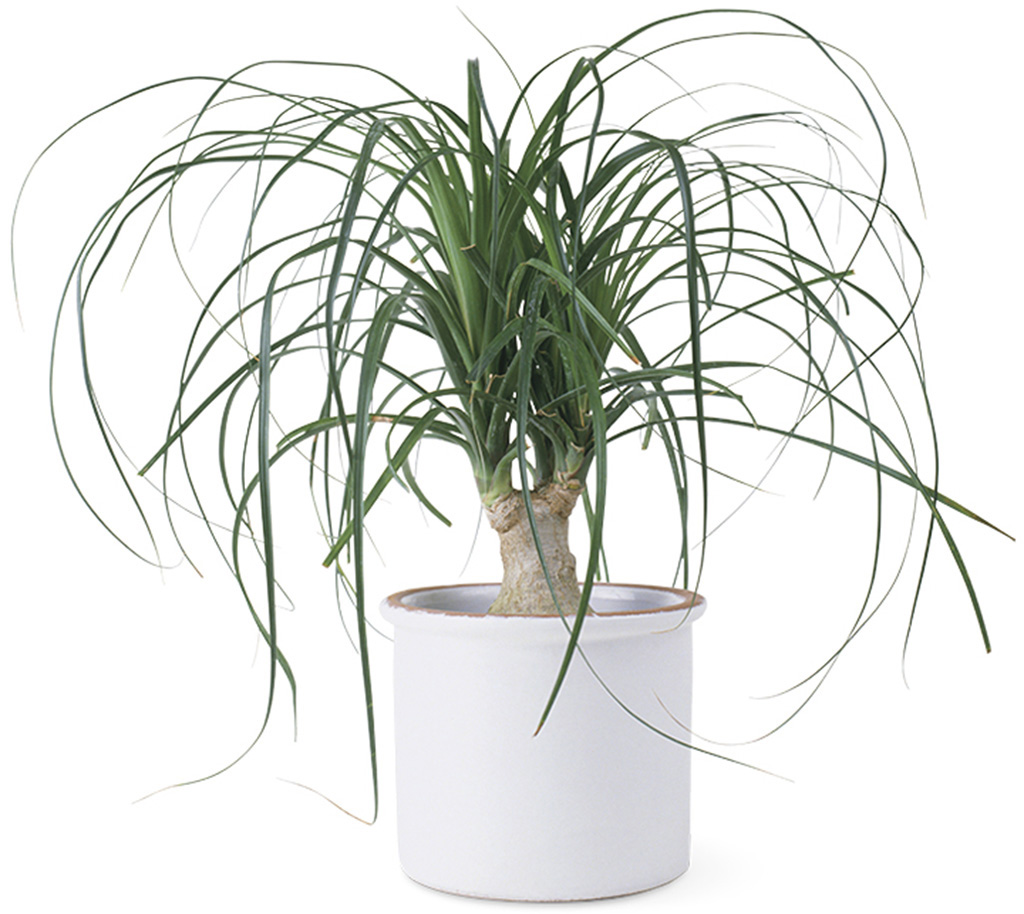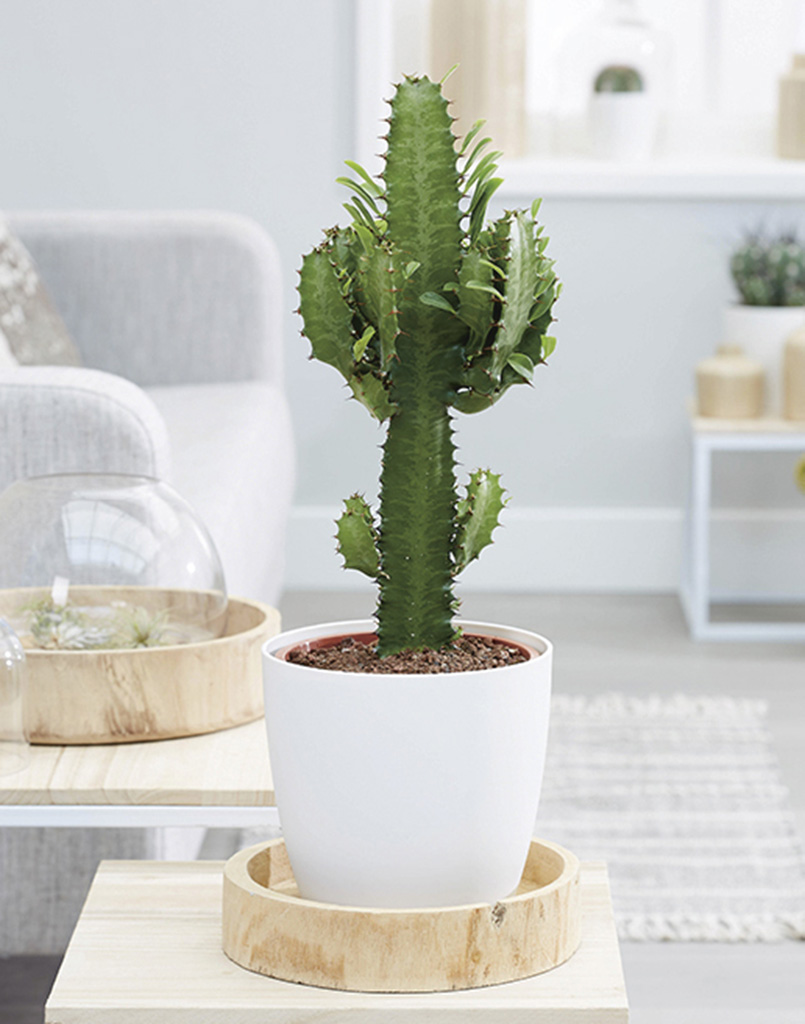PONYTAIL PALM
BEAUCARNEA RECURVATA
As soon as you see this plant you’ll understand why it’s called the ponytail plant: it forms a fountain of long, thin, straplike leaves that make it a unique upright specimen and a frequent conversation piece. This easygoing, elegant plant is simple to place, as it enjoys both filtered sunlight and low humidity.
HEIGHT 6ft 6in (2m)
SPREAD 3ft 3in (1m)
FLOWERS Unlikely to bloom indoors
FOLIAGE Thin, straplike
LIGHT Sun/filtered sun
TEMPERATURE 50–79°F (10–26°C)
CARE Easy
PLACE OF ORIGIN Mexico
WARNING! Leaves are slightly serrated; gloves required when handling
CARE
When fully mature, this unique plant is a wonderful addition to a well-lit entrance hall, where it looks best planted in a large, floor-standing pot. One of the plant’s most distinctive features is its trunk, which has a swollen base that enables it to store water. When placing it in your home, bear in mind it’s fun to showcase this feature.
Although labeled as a palm, the ponytail plant is in fact more closely related to the yucca. Like the yucca, it’s tough, thrives on neglect, and prefers being planted in a cactus potting mix. The bigger the pot you plant it in, the larger your plant will grow. Water sparingly and feed in spring with a half-strength, balanced fertilizer. Avoid drafts, especially in winter. The long leaves will benefit from being cleaned with a damp cloth, but watch out for the serrated leaf edges.
Flowers are rare when grown as a houseplant, as are the offshoots that can appear at the base of the adult plant.
PROBLEM SOLVING A common problem is stem rot—caused by excess water— which can kill a plant. You can try to remedy this by dramatically reducing watering, but it’s best to avoid the issue by not overwatering in the first place. As with many plants placed in warm, bright rooms, your plant may attract red spider mites. Reduce the chances of encountering these pests by misting the plant.

The ponytail palm is slow-growing but extremely long-lived.
DISPLAY
The foliage of the ponytail palm tumbles toward the floor. For dramatic effect, partner it with plants that have foliage that does the opposite but share the same care needs. The variegated snake plant, for example, displays upright, sword-shaped foliage and reaches 30in (75cm) in height. The bird’s nest sansevieria, which reaches just 8in (20cm) in height, is the perfect partner for smaller, tabletop-sized ponytail palms.
Houseplants A–Z | PONYTAIL PALM
ALSO TRY
The ponytail palm’s ability to store water and cope with irregular watering makes it ideal for people who are often away from home. If this appeals, then also consider:
- Cathedral plant (Euphorbia triangularis), height 3ft 3in (1m). This attractive cactus look-alike has a ribbed and thorny stem.
- Peruvian cactus (Cereus), height up to 36in (90cm). This plant has the familiar and classic cactus shape, with spiny stems and pink or white flowers.

The cathedral plant is an attractive, undemanding succulent.
